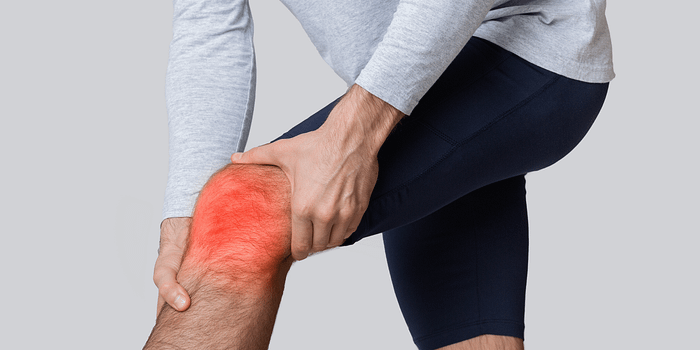Ultrasound-Guided Cortisone Injections for Pes Anserine Bursitis
Pes anserine bursitis is a common condition characterised by inflammation of the pes anserine bursa, a fluid-filled sac located at the medial aspect of the knee. This condition often causes localised pain and tenderness, particularly in individuals engaged in activities involving repetitive knee movements or prolonged weight-bearing.
At Alton Pain Clinic, we provide specialised care for managing musculoskeletal conditions, including pes anserine bursitis. This blog explores the anatomy, pathology, and management of pes anserine bursitis, with a focus on ultrasound-guided cortisone injections. These injections are an effective interventional option to alleviate inflammation and discomfort associated with this condition.

Anatomy of the Pes Anserine Bursa
The pes anserine bursa is a small, fluid-filled sac located between the pes anserinus tendon and the tibia’s medial surface.
- Pes Anserinus Tendon: The tendon comprises the conjoined tendons of three muscles:
- Sartorius: Flexes, abducts, and laterally rotates the hip.
- Gracilis: Aids in hip adduction and knee flexion.
- Semitendinosus: Contributes to knee flexion and hip extension.
Bursa Function:
- Acts as a cushion to reduce friction between the pes anserinus tendon and the underlying bone during knee movements.
- Facilitates smooth tendon gliding, especially during flexion and extension.
Anatomical Location:
- Found approximately 2–3 cm below the medial joint line of the knee.
Pathology of Pes Anserine Bursitis
Pes anserine bursitis occurs due to irritation or inflammation of the bursa, leading to pain and restricted mobility.
Causes:
- Overuse Injury: Repetitive knee movements, common in runners and athletes.
- Direct Trauma: A blow or pressure on the medial knee.
- Biomechanical Abnormalities: Gait abnormalities, obesity, or knee malalignment increasing stress on the bursa.
- Underlying Conditions: Often associated with osteoarthritis, diabetes, or tight hamstrings.
Symptoms:
- Localised pain and tenderness at the inner knee, below the joint line.
- Swelling and warmth over the bursa.
- Discomfort during activities such as climbing stairs or rising from a seated position.
- Stiffness and restricted range of motion.
Diagnosis of Pes Anserine Bursitis
A thorough evaluation is essential for diagnosing pes anserine bursitis and differentiating it from other knee pathologies.
Clinical Examination:
- Assessment of pain localisation and tenderness.
- Evaluation of knee range of motion and muscular strength.
Imaging Studies:
- Ultrasound: Provides detailed visualisation of bursa inflammation or fluid accumulation.
Management of Pes Anserine Bursitis
Treatment strategies for pes anserine bursitis aim to reduce inflammation, alleviate pain, and restore function.
Conservative Treatments:
- Rest and Activity Modification: Avoid activities that exacerbate symptoms.
- Physical Therapy: Focus on stretching and strengthening exercises, especially for the hamstrings and quadriceps.
Interventional Treatments:
- For persistent symptoms, ultrasound-guided cortisone injections provide a targeted approach to managing inflammation.
Cortisone Injections for Pes Anserine Bursitis
Cortisone injections are commonly used to treat bursitis by directly addressing the inflammation within the bursa.
Mechanism of Action:
- Cortisone is a powerful corticosteroid that suppresses inflammation by inhibiting pro-inflammatory pathways.
- It reduces the production of mediators such as prostaglandins and cytokines, leading to decreased swelling and pain.
- The injection also minimises the immune system’s response, preventing further irritation of the bursa.
Ultrasound Guidance:
- Ensures precision in administering the injection into the inflamed bursa.
- Minimises the risk of complications and enhances the therapeutic effect.
Procedure:
- The procedure is typically quick and minimally invasive, with patients experiencing significant relief within days to weeks.
Benefits of Ultrasound-Guided Cortisone Injections at Alton Pain Clinic
At Alton Pain Clinic, we specialise in advanced interventional techniques to ensure optimal care for our patients.
- Expert Team: Our clinicians are skilled in using ultrasound imaging for accurate diagnosis and treatment.
- State-of-the-Art Facilities: We use the latest technology to provide safe and effective procedures.
- Individualised Care: Treatment plans are tailored to each patient’s unique needs and condition.
Preventing Recurrence
To minimise the risk of recurrent pes anserine bursitis, long-term strategies may include:
- Weight Management: Reducing excess body weight to lower stress on the knee joint.
- Proper Footwear: Using supportive shoes to improve biomechanics.
- Exercise Programmes: Maintaining a balance between strengthening and flexibility exercises for the lower limb muscles.
Conclusion
Pes anserine bursitis is a manageable condition when addressed promptly and effectively. At Alton Pain Clinic, our expertise in ultrasound-guided cortisone injections offers patients a precise and minimally invasive solution to reduce inflammation and pain.
By combining interventional treatments with education and long-term management strategies, we empower patients to regain mobility and improve their quality of life. For tailored care and advanced solutions, trust Alton Pain Clinic to guide you on your journey to recovery.

Comments
Post a Comment